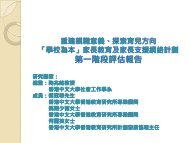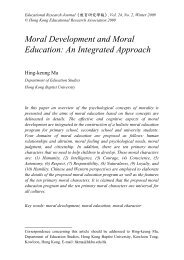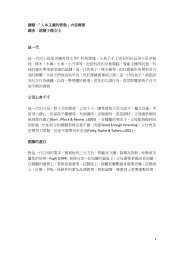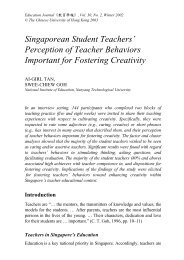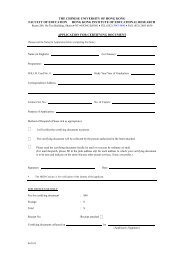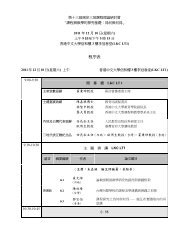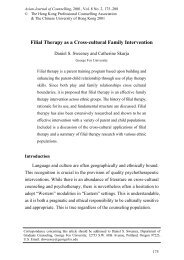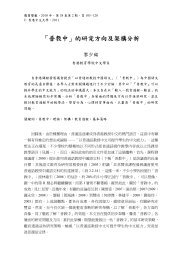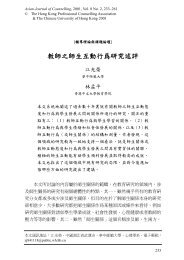Using School Evaluation Policy to Effect Curriculum Change? A ...
Using School Evaluation Policy to Effect Curriculum Change? A ...
Using School Evaluation Policy to Effect Curriculum Change? A ...
You also want an ePaper? Increase the reach of your titles
YUMPU automatically turns print PDFs into web optimized ePapers that Google loves.
190 Shirley Sze-yin Yeung<br />
countries adopt more liberal kinds of self evaluation. In some places, as<br />
in Hong Kong, schools are encouraged <strong>to</strong> adopt a combination of<br />
internal (school self evaluation) and external modes of evaluation. In<br />
either case, schools involved usually follow an evidence-based and<br />
standard-based model <strong>to</strong> produce objective and valid evidence of school<br />
performance.<br />
In actual fact, evaluation has a significant role in curriculum change.<br />
As Morris and Adamson (2010) mention,<br />
Any useful and comprehensive evaluation of a school has <strong>to</strong> address<br />
questions related <strong>to</strong> the curriculum and it should be able <strong>to</strong> identify and<br />
recommend solutions <strong>to</strong> any curriculum problems. (p. 170)<br />
<strong>Evaluation</strong> has many faces and it works for different purposes in<br />
different occasions (Nevo, 1995). While school evaluation or school<br />
review is essential <strong>to</strong> scrutinize school quality, program evaluation<br />
serves <strong>to</strong> evaluate the effect of curriculum change (Hopmann, 2003;<br />
Nevo, 1995; Popham, 1993). At any rate, educa<strong>to</strong>rs agree that<br />
curriculum change needs <strong>to</strong> be informed by evaluation (Hopmann, 2003;<br />
Morris & Adamson, 2010; Tener, 2009; Wood, 2001). The literature<br />
contains various models and approaches of evaluation <strong>to</strong> assess the<br />
quality and effectiveness of curriculum innovations, new projects and<br />
programs (Popham, 1993; Stufflebeam, Madaus, & Kellaghan, 2000;<br />
Worthen & Sanders, 1987). There are diverse views of purposes about<br />
educational evaluation underlying different models. For instance, the<br />
goal-attainment model of evaluation functions <strong>to</strong> verify if the goals of<br />
curriculum change have been implemented (Smith & Tyler, 1942);<br />
whereas the CIPP (Context-Input-Process-Product) models can help<br />
providing information for judging curriculum decisions (Stufflebeam,<br />
2000). All in all, evaluation can serve <strong>to</strong> provide empirical evidences<br />
that contribute <strong>to</strong> decisions about curriculum change (Worthen &<br />
Sanders, 1987, p. 6). However, it is criticised that policy-makers or<br />
school administra<strong>to</strong>rs often fail <strong>to</strong> base curriculum change on evaluation,<br />
leading reform sometimes appears <strong>to</strong> be based mainly on “slogans,<br />
doctrine or political goals” rather than on “a sound research base”<br />
(Mayer, 2005, p. 68). In Hong Kong, “Government-initiated”



